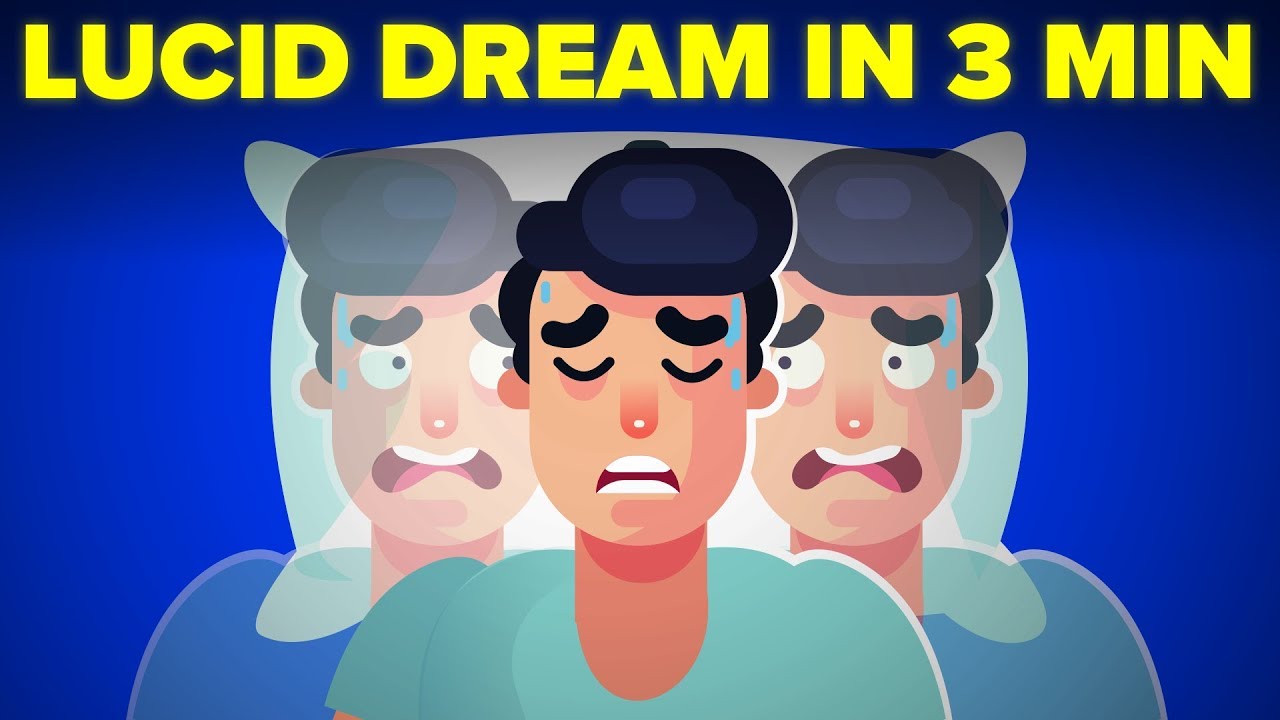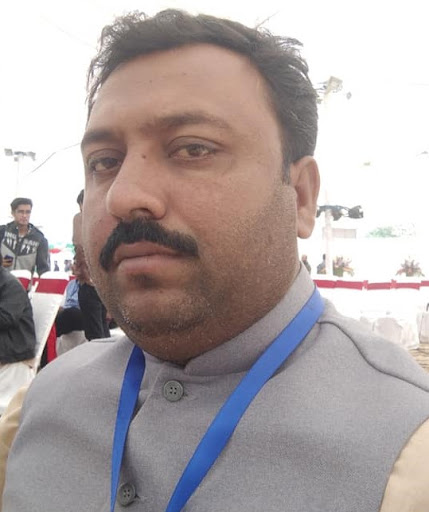How To Have A Lucid Dream - Best Methods For Beginners
Lucid dreaming offers a gateway to conscious adventures while you sleep. It’s not just about enjoying surreal experiences but also about self-discovery and mental clarity. Many have used lucid dreams to address fears, practice skills, and even spark creativity.
Author:Suleman ShahReviewer:Han JuJan 03, 202527.9K Shares399.2K Views

Imagine waking up within a dream, fully aware that you're dreaming and able to control the narrative. This is the fascinating world of lucid dreaming. Unlike ordinary dreams where we passively experience events, lucid dreaming empowers us to actively shape our subconscious adventures.
The concept has captivated scientists, psychologists, and dream enthusiasts alike. With dedication and specific techniques, anyone can unlock this state of conscious dreaming. Beyond its allure, lucid dreaming offers practical benefits, but understanding and practicing lucid dreaming can transform the way you interact with your subconscious mind.
What Is Lucid Dreaming?
Lucid dreaming occurs when a person becomes conscious of the fact that they are dreaming while still asleep. In some cases, this awareness allows the dreamer to influence or control aspects of the dream, such as the environment or storyline. Approximately one-third of lucid dreams involve this level of control, adding a dynamic and interactive element to the dreaming experience.
It is important to distinguish lucid dreams from vivid dreams. Vivid dreams are memorable for their clarity and detail, but they do not necessarily involve the dreamer being aware of the dream state. In contrast, lucid dreams are marked by an active recognition of dreaming as it happens.
Research shows that lucid dreaming typically takes place during REM (Rapid Eye Movement) sleep, the phase of sleep associated with the most vivid and imaginative dreams. REM cycles grow longer as the night progresses, making lucid dreams more likely during the latter half of a sleep session.
For many, lucid dreaming is described as an enjoyable and even euphoric experience. Experts and seasoned dreamers alike suggest that lucid dreaming can offer numerous benefits, such as alleviating nightmares, reducing anxiety and depression, and fostering creative problem-solving skills.
Key Features Of Lucid Dreams:
- Awareness of the dream state.
- Ability to control dream elements.
- Occurs during REM sleep, typically in the later stages of the sleep cycle.
- Can be pleasant, therapeutic, or occasionally unsettling.
Benefits Of Lucid Dreaming
Lucid dreaming has intrigued researchers and dream enthusiasts alike due to its potential to enhance creativity, alleviate stress, and support mental health. Below are some notable benefits:
- Boosting Creativity: Lucid dreams offer a limitless canvas for exploring imaginative ideas and scenarios, making them a valuable tool for artists, writers, and problem-solvers.
- Therapeutic Applications: For individuals with post-traumatic stress disorder (PTSD)or recurring nightmares, lucid dreaming provides a safe space to confront fears and alter distressing narratives.
- Improving Problem-Solving Skills: By rehearsing scenarios or brainstorming within dreams, lucid dreamers can enhance cognitive flexibility and real-life decision-making.
- Strengthening Motor Skills: Research suggests that mentally practicing physical activities in dreams can improve motor skills, benefiting athletes and those in rehabilitation.
- Personal Growth: Lucid dreaming encourages introspection, helping individuals gain insights into their subconscious mind and emotional state.
Read Also: The Top Benefits Of Dreaming

How To Lucid Dream in Your Sleep In 3 Minutes
How To Achieve Lucid Dreams
Mastering lucid dreaming requires dedication, practice, and an understanding of effective techniques. Below are step-by-step methods to help you initiate and maintain lucid dreams.
Practice Reality Testing
Reality testing trains your mind to distinguish between waking and dreaming states, increasing your chances of becoming lucid while asleep.
- Hand Check: Observe your hands - in dreams, they may appear distorted or have an incorrect number of fingers.
- Text Reading: Look at a piece of text, then look away and back again. In dreams, text often changes or becomes blurry.
- Mirror Test: Examine your reflection; it may appear unusual in dreams.
- Breath Test: Pinch your nose and try to breathe. If you can, you’re dreaming.
Perform these checks regularly during the day to build a habit that carries over into your dreams.
Intentional Dream Awareness (MILD Technique)
A popular and effective approach, the MILD technique involves setting a strong intention to recognize when you’re dreaming and bringing that awareness into your dream state:
- Recall Your Dreams: When you wake up during the night, try to remember your most recent dreams in detail.
- Identify Dream Clues: Look for elements in your dreams that seem unusual or out of place. These clues can help you recognize when you’re dreaming.
- Repeat an Affirmation: Use a mantra such as, “When I dream, I will remember I am dreaming,” to focus your intent.
- Visualize Success: Imagine yourself becoming aware during a dream and controlling the narrative. This mental rehearsal primes your subconscious.
The MILD technique works best when paired with consistent practice and a dream journal to track progress.
Senses-Focused Dream Awareness (SSILD Technique)
The SSILD technique is a sensory-driven approach to achieving lucid dreams. It involves cycling through your senses to heighten awarenessand facilitate a lucid state:
- Visual Focus: With your eyes closed, pay attention to any visual impressions, such as colors or patterns.
- Auditory Awareness: Notice the sounds around you, whether internal (like your heartbeat) or external (like faint noises in your environment).
- Physical Sensations: Tune into how your body feels, from the weight of your blanket to subtle internal sensations.
Cycle through these sensory exercises quickly at first, then slow down and spend more time on each sense as you relax into sleep.
Wake Back To Bed (WBTB)
The WBTB technique leverages the natural increase in REM sleep later in the night:
- Set an Alarm: Wake up after 4-6 hours of sleep.
- Stay Awake Briefly: Engage in a calm activity like reading about lucid dreaming or reviewing your dream journal for 20-30 minutes.
- Return to Sleep: Use a relaxation technique such as MILD or SSILD as you fall back asleep to increase the likelihood of lucidity.
Maintain A Dream Journal
Keeping a dream journal is one of the most effective ways to improve your dream recall and increase the likelihood of lucid dreaming. As soon as you wake up, write down everything you remember about your dreams. This practice helps you become more aware of recurring themes, symbols, or patterns that might serve as cues to recognize when you’re dreaming.
By consistently documenting your dreams, you train your brain to pay closer attention to them, making it easier to identify when you’re in a dream state. Over time, this heightened awareness can naturally lead to more frequent lucid dreams.
Use External Stimuli And Supplements With Caution
Some individuals turn to external stimuli, such as light or sound devices, to aid in inducing lucid dreams. These tools are designed to provide subtle cues, like flashing lights or gentle sounds, during REM sleep, signaling the dreamer to become aware of the dream state.
Similarly, some people experiment with supplements like galantamine or Alpha-GPC, which are believed to enhance dream vividness and increase the chances of lucidity. However, these methods should be approached carefully. Supplements, while effective for some, can have side effects and may not be suitable for everyone.
It is crucial to consult a healthcare provider before incorporating any of these techniques to ensure they align with your health and safety. Over-reliance on these methods may disrupt natural sleep patterns, so balance and moderation are essential.
See Also: Why You Can't Remember Your Dreams?
Risks And Precautions
While lucid dreaming is generally safe, certain techniques and experiences may pose challenges. It’s important to be aware of potential risks:
- Sleep Disruption: Techniques like WBTB may interfere with your overall sleep quality, leading to fatigue.
- Sleep Paralysis: Brief episodes of paralysis upon waking can occur, especially if sleep patterns are irregular.
- Reality Confusion: Frequent lucid dreaming may blur the boundaries between dreams and reality, causing disorientation.
- Dysphoric Dreams: Lucid nightmares, though rare, can be unsettling and difficult to control.
- Mental Health Concerns: Individuals with anxiety, PTSD, or dissociative disorders should consult a healthcare provider before attempting induction techniques.
Frequently Asked Questions
How Long Does It Take To Experience A Lucid Dream?
The time frame varies by individual. Some may achieve lucidity within a week, while others might take months of consistent practice.
Can Everyone Learn To Lucid Dream?
With dedication and the right techniques, most people can learn to lucid dream. However, sleep quality and consistency play a significant role.
Are Lucid Dreams Always Enjoyable?
Not necessarily. While many find them exhilarating, others may experience lucid nightmares or anxiety within the dream.
Is Lucid Dreaming Scientifically Proven?
Studies have confirmed the existence of lucid dreaming and its associated brain activity, particularly in the prefrontal cortex.
Can Lucid Dreaming Improve Sleep Quality?
While it can be therapeutic, overuse of induction techniques may disrupt sleep patterns. Balance and moderation are key.
Conclusion
Lucid dreaming is more than a nighttime curiosity; it is a powerful tool for self-discovery, creativity, and healing. By understanding the science behind it and practicing proven techniques, you can unlock the potential of your subconscious mind.
While it takes time and persistence to master, the rewards are well worth the effort. As you journey into this extraordinary realm, you’ll not only gain deeper insight into yourself but also discover the limitless possibilities of the human mind. Start tonight, and let your dreams take you places you’ve never imagined.
You Might Also Like: Understanding The Meaning Behind Bleeding Ears Dreams

Suleman Shah
Author
Suleman Shah is a researcher and freelance writer. As a researcher, he has worked with MNS University of Agriculture, Multan (Pakistan) and Texas A & M University (USA). He regularly writes science articles and blogs for science news website immersse.com and open access publishers OA Publishing London and Scientific Times. He loves to keep himself updated on scientific developments and convert these developments into everyday language to update the readers about the developments in the scientific era. His primary research focus is Plant sciences, and he contributed to this field by publishing his research in scientific journals and presenting his work at many Conferences.
Shah graduated from the University of Agriculture Faisalabad (Pakistan) and started his professional carrier with Jaffer Agro Services and later with the Agriculture Department of the Government of Pakistan. His research interest compelled and attracted him to proceed with his carrier in Plant sciences research. So, he started his Ph.D. in Soil Science at MNS University of Agriculture Multan (Pakistan). Later, he started working as a visiting scholar with Texas A&M University (USA).
Shah’s experience with big Open Excess publishers like Springers, Frontiers, MDPI, etc., testified to his belief in Open Access as a barrier-removing mechanism between researchers and the readers of their research. Shah believes that Open Access is revolutionizing the publication process and benefitting research in all fields.

Han Ju
Reviewer
Hello! I'm Han Ju, the heart behind World Wide Journals. My life is a unique tapestry woven from the threads of news, spirituality, and science, enriched by melodies from my guitar. Raised amidst tales of the ancient and the arcane, I developed a keen eye for the stories that truly matter. Through my work, I seek to bridge the seen with the unseen, marrying the rigor of science with the depth of spirituality.
Each article at World Wide Journals is a piece of this ongoing quest, blending analysis with personal reflection. Whether exploring quantum frontiers or strumming chords under the stars, my aim is to inspire and provoke thought, inviting you into a world where every discovery is a note in the grand symphony of existence.
Welcome aboard this journey of insight and exploration, where curiosity leads and music guides.
Latest Articles
Popular Articles
